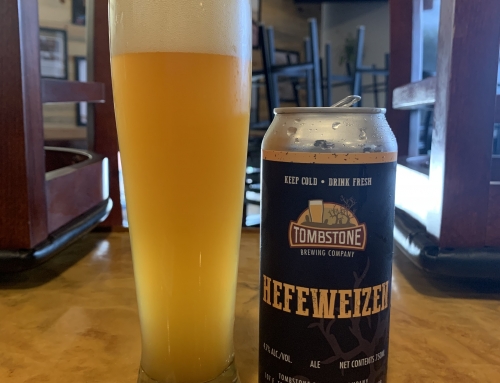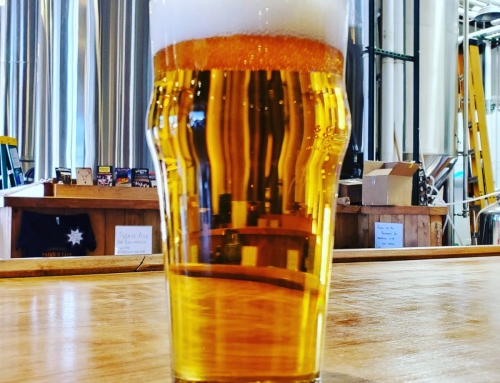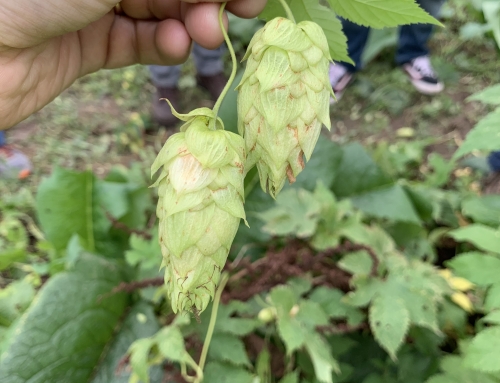Until the time that I went to Germany for school, I didn’t have much of an affection for Helles or Pilseners. I had a thought that German brewers were stuck in the past and that the Helles and Pils styles should have evolved to keep up with other modern styles. In a way, the German light lagers have changed over the years, but I would argue that they have actually taken a step in the opposite direction of American craft beer and instead have followed a trend of making the styles even less hoppy in recent years. Good luck telling a German brewer to change their ways though… It wasn’t until I tried Augustiner Pils that I really began to change my mind about these styles.
Augustiner Pils is a great hopbursted pilsener and features a lot of lemony, spicy noble hop characters from the use of what I was told was Hallertauer Mittlefrüh. It was the first German Pils that I had where the brewer deviated from the norm and created a beer that really stood out in its class. After drinking that beer, I dedicated most of my spare time in Germany talking with my professors about what goes into making a world class Pils and Helles. I realized that the hopbursted Pils idea was something that could be received well by American craft beer drinkers that normally would pass on the style and I set out to create a Pilsener that I thought would resonate well in the Southeast and used all traditional Pils ingredients. Now, I’m excited to be brewing a Helles that I think is the direction that German brewers would have gone with the style if brewers followed the same trends that we have seen in America: Essentially taking the style and using new techniques and ingredients to create something still recognizable as being a Helles, but upgraded.
One thing that I found interesting about brewers in Munich was that they took great pride in the appearance of their beers. So many hours were discussed about the importance of creating the palest beer possible (as my professors would say, it should not be yellow or gold, but the color of straw) with fast rising bubbles that feed a thick, lasting foam. It would seem that the answer would be simple: use the lightest malts available and carbonate to a high level. However, there are so many more factors that influence color. Perhaps most importantly after the ingredient selection is the equipment used and water chemistry. In Munich, their water is fairly hard with an elevated pH level and doesn’t allow for them to brew beers that are quite as light colored as in other areas of Germany or in the Czech Republic. Luckily for us though, we have our reverse osmosis water allowing for us to have a blank slate to start from and a fairly low pH off the bat. For the water, I added only a slight bit of calcium, sulfate, chloride, and magnesium. It was really the smallest amount of each mineral necessary in order to have an effective mash and to have good yeast flocculation. The target pH level was right on at 5.2 without the need for any adjustments.
For the malt, I went with a widely used Pils malt from Schill Malting in Osthofen. Their pils malz is the lightest fully modified malt I have found available at 1.2 degrees lovibond. It was obvious when I opened the bags that the malt was very consistent and light colored and its moderate protein levels should allow for a great head retention. The mash temperature was low and the mash was long to encourage more simple sugars to create a dry easy drinking beer. The wort was very light colored going into the boil kettle and I’m fortunate to have a steam jacketed boil kettle to create a very gentle rolling boil which helps to minimize darkening of the wort.
Up until the boil, everything was mostly true to style (other than the soft water) and what would likely be expected of a German brewer. The boil is where the deviation occurred. Instead of using traditional noble hops, I wanted to use a hop variety that has a lot of the character that I expect from noble hops, but without the earthy, spiciness. A recent varietal, Lemondrop, is perfect for this. It has a true lemon like flavor and is unmistakable. Although it is an American variety, a few progressive German brewers have had success in brewing Pileners with it. In addition to using a newer American hop variety, the only hop addition for our Lemondrop Helles was a whirlpool addition. As a result, the hop flavor and aroma will be more pronounced than what would me expected of a malt forward German Helles. It will almost blur the lines for hop aroma between a German Helles and a German Pils, but the bitterness level will be exactly in line with a Helles at 18 IBU as opposed to a Pilsener at 30-35 IBU (or if you’re my German professors, you might say 33 IBU, no less, no more, is the perfect bitterness for a modern Pils).
The yeast strain we used is the lager yeast from Augustiner and it is very distinctive for being able to fully attenuate a beer, but still leave an impression of maltiness. It is a yeast strain that I have used almost exclusively for lagers for a few years now. The Lemondrop Helles will be ready by early December at the latest and should be one of the beers we have on tap at the grand opening of our taproom. Prost!




Leave A Comment